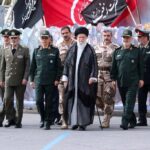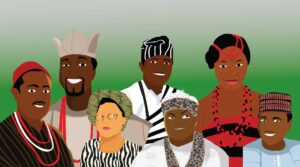
Some tribes value education, and some others don’t..CONTINUE FULL READING>>>>>
There are over 250 ethnic groups in Nigeria and they have their unique culture, values, and relationship with education.

Some tribes value education, and some others don’t, and this inequality exists particularly between the southern and northern parts of the country. Despite decades of national investment in education, Nigeria’s literacy and education levels are still quite low and don’t even rank among countries with the highest IQs globally.

In 2022, Nigeria’s national literacy rate reached 69%, according to the National Bureau of Statistics (NBS), a modest improvement since 2007. But this progress hides vast regional and tribal disparities. While states like Imo and Lagos boast literacy levels as high as 96%, states like Yobe and Zamfara still struggle far below the national average.

Southern tribes consistently lead, while many northern communities continue to face educational barriers. Here’s the top 10 most educated tribes, ranked by youth literacy (ages 15–24) and tertiary education rates:

Discover the best Android phones under ₦100,000 in Nigeria. Find stylish, high-performing smartphones that fit your budget and lifestyle.
Hoping to earn more in 2025? These tech skills can make you self-sufficient in just 6 months. Find out which ones are in demand and where to learn them.
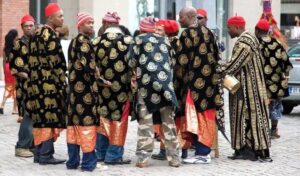
While it hasn’t officially launched yet, the OnePlus Open 2 is already making waves, with early renders and leaks that have started serious hype online.
Top 10 Most Educated Tribes in Nigeria
Here’s a chart from Intel point summarising the top 10 most educated tribes in Nigeria as of 2024:
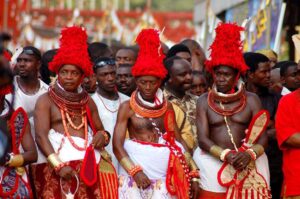
The youth literacy is 74.2% for males and 73.1% for females, and these figures rank top for both genders among all tribes. The Igbo tribe in Nigeria is renowned for its business acumen and entrepreneurial spirit. However, they are also highly educated and have made significant contributions to the country’s educational landscape. They have a strong emphasis on education and believe in the power of knowledge to empower their community.
2. Edo
The youth literacy for males in Edo is 74.2% and 59.56% for females. The Edo tribe, known for their rich civilisation and high migration rates, is also recognised for their commitment to education. They place a strong emphasis on the value of knowledge and learning, making them one of the most educated tribes in Nigeria. Education among the Edo tribe goes beyond academic achievements. It is also intertwined with the preservation and promotion of their rich cultural heritage.
3. Yoruba
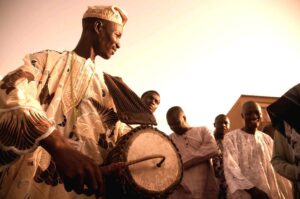
The youth literacy for Yoruba males is 70.3% and 56.8% for the females. The Yoruba tribe in Nigeria is widely recognised as one of the most educated tribes in the country. They have a long history of embracing Western education, and as a result, have achieved remarkable educational milestones. The Yoruba tribe has a significant number of professors within their community, and these individuals serve as inspiring role models to the younger generations.
4. Tiv

The youth literacy for Tiv males is 68.4% and 37.4% for females. There is a huge disparity in education between the genders. Tiv isa major ethnic group in Nigeria, primarily residing in Benue State and neighbouring regions. Historically, they relied on oral tradition and practical activities for knowledge transmission, with women often having less access to formal Western education. While Western education has opened up opportunities for Tiv women, these challenges remain.
5. Ijaw
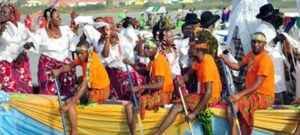
The youth literacy for Ijaw males is 63.3% and 47.7% for females. The Ijaw tribe, prominent in the Niger Delta region, is not only politically influential but also highly educated. With a strong emphasis on education, the Ijaw people have produced a significant number of educated individuals who play significant roles in society.
6. Hausa
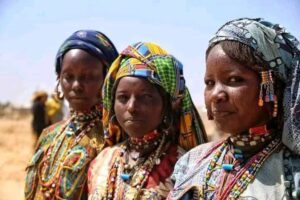
The youth literacy for Hausa men is 63.3% and 47.7% for women. Northern states have historically lagged due to limited colonial-era schooling in the North. Recent improvements only began through adult and rural literacy initiatives. This tribe is known for its political dominance, and despite their cultural and population challenges, those who pursue education within the Hausa tribe have proven their intellectual capabilities.
7. Ibibio
The youth literacy for males in Ibibio is 57.7% and for females, 62.2%. The Ibibio people are found in the South-South region of Nigeria in Akwa Ibom State, Cross River State, and Eastern Abia State (Arochukwu and Ukwa East LGAs). This tribe benefited from community and government literacy programs, which have shown strong improvements in literacy across both genders over the years.
8. Other Ethnicities
Other ethnicities like Urhobo / Itsekiri / Isoko / Calabar, and many others, fall under this category. For example, Urhobo (Delta), Itsekiri (Western Niger Delta), Isoko, and Calabar/Efik communities have historical ties to early education via missionaries/trade.
9. Kanuri
The youth literacy for Kanuri males is 42% and 22.7% for females. The Kanuri people, primarily located in northeastern Nigeria, have a complex relationship with education, influenced by their cultural values and the introduction of modern schooling. While education is valued, some Kanuri communities have experienced a disconnect between traditional Kanuri culture and the formal school curriculum, leading to resistance to modern education in certain areas.
10. Fulani
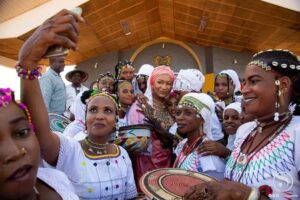
The youth literacy for Fulani men is 26.2% and 13.8% for females. This tribe is traditionally nomadic, which makes formal education access more difficult.
Education Trends (2000 – 2024)
2000–2004: The Igbo and Yoruba led in literacy, while the Hausa and Fulani lagged. Nigeria’s literacy rate in 2003 was 54.77%.
2005–2009:
The literacy rate rose to 70.20%. The rate of increase for the Edo and Tiv peoples was impressive, while that of the Fulani and Kanuri still lagged far behind.
2010–2014: Nigeria’s literacy rate in 2010 was 68.11%. Igbo and Yoruba continued to lead, while Edo and Tiv showed improvements with targeted programmes, but Fulani and Kanuri remained disadvantaged.
2015–2019: By 2018, the Fulanis saw gains of about 35%, aided by government programmes directed at nomadic and rural populations.
2020–2024: Nigeria’s literacy rate was 77.62% in 2021 but declined to 59.57% by 2024. The Igbo and Yoruba remained at the top, while the Fulani and Kanuri improved.
In conclusion, Igbo, Edo, and Yoruba top Nigeria’s educational rankings.CONTINUE FULL READING>>>>>


